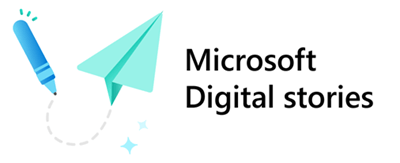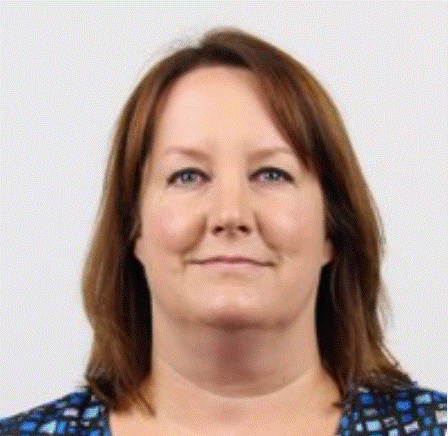
In a global organization, it’s easy for crucial communications to miss the mark as they disperse across international teams.
Communications from core corporate teams like Security, HR, or Employee Listening might suffer from fragmentation and poor localization. Employees might tune out centralized messaging due to the volume of campaigns. And local communicators might feel overburdened by the sheer volume of information and resources they need to disseminate.
Within Microsoft Digital, the company’s IT organization, our Western European team has developed a process for closing these communication gaps.
Microsoft Viva Amplify is the tool that enables their work.
Global communications, local challenges

Global enterprises aren’t monoliths. Microsoft encompasses several major regions around the world, and many of those regions are home to diverse cultures and languages, each with specific needs.
Western Europe is a perfect example. It comprises over 15,000 Microsoft employees spanning 11 different countries. As a result of this wide and varied workforce, our Microsoft Digital team in the region was facing several communications challenges:
- Individual countries and regions had different communications structures based on local policies. For example, the team could communicate directly with Microsoft employees in one country but had to route messaging through the PR lead in another.
- With different corporate teams communicating at scale, there was too much noise in the ecosystem, and that clashed with a cultural preference for local communications from sources close to the recipients.
- Because of the specific workplace culture in certain EU locations, centralized communicators couldn’t even access local channels.
“Our task was to find the right medium to access our audience while avoiding the need to write everything from scratch,” says Allan Hvass, director of Employee Experience for Microsoft Digital in Western Europe. “The right carrier for your message is someone who can relate to the audience they’re trying to reach.”
After investigating different approaches to solving these challenges, the team landed on a process for receiving and distributing centralized communications and deploying them through more local channels. Thanks to its simplicity and multi-channel flexibility, they chose Microsoft Viva Amplify as the engine behind their efforts.
“In a word, Viva Amplify is easy,” says Nicola Pettinato, senior IT manager with Microsoft Digital. “It helps you create communications in the right format for the platform you want, in the context that works for your users.”
Robust processes supported by the right tools
The team developed a process that would channel centralized communications from global Microsoft Digital functions to the Western European team and from there to employees. That process encompasses three distinct elements:
- An editorial structure managed in Microsoft Loop
- A publishing process handled by Microsoft Viva Amplify
- Communication channels employees use in their day-to-day work, primarily Microsoft Viva Engage, Microsoft Teams, and Microsoft Outlook
Loop is the foundation of the process. That’s where the Western Europe team houses their editorial calendar. It takes the form of a table with an entry for each post, including fields for attributes like the topic and intended platform, the date of the communication, its owner, and its progress through the publishing process.
The Loop page also includes a detailed brief with instructions that walk centralized communications teams through the steps for sharing their content.
“Within Microsoft Digital, we have a dedicated communications team that creates all kinds of content in a promotional calendar, which we distribute to different channels around the world,” says Sandra Hausfelder, Adoption and Insights lead for Microsoft Digital. “Western Europe is just one consumer for this content, and we collaborate closely to make sure we’re aligning our formatting with the needs of their editorial calendar.”
Delivering that content involves a templatized Microsoft PowerPoint deck featuring all the relevant information, including text, branding, intended channel, and directions for publishing. From there, the Western Europe team inputs that content into their calendar at the regular cadence they’ve established.
Once the content is in place, the team initiates a workflow that pulls in key roles for testing, approving, and publishing posts. That’s where Viva Amplify comes into play.
The team ports the content over to Viva Amplify as part of a persistent evergreen campaign they call Digital Insider. It publishes between one and three Viva Engage posts a week, each on a single topic.
The campaign also flights more high-impact announcements once a month across both Viva Engage and Outlook. Announcements function as newsletters that contain content from other posts throughout the month and any other high-value messaging.
To facilitate communications on Viva Engage, the team has created a Digital Insider channel that includes everyone in the Western European subsidiaries of Microsoft. That makes it easy for more local IT managers and business program managers in individual countries to tailor and share the most relevant content with their colleagues—further emphasizing local connections.
They also publish the content to an internal Microsoft Teams channel to facilitate granular sharing by local leaders.
“The process we’ve created balances between centralized efforts and a local-only approach,” Hvass says. “It encapsulates the global communications that need to go out to all employees and gives people the opportunity to push locally as well.”
The flexibility and efficiency of Viva Amplify make it an ideal tool for this kind of work. It automatically formats content for different communications platforms like Viva Engage, Teams, and Outlook, making multi-channel messaging very efficient. Metrics are also highly accessible, so the team can easily understand how effectively their campaigns are landing.
A regional conduit for global communications
Digital Insider messages cover all different aspects of central Microsoft Digital communications. They include Copilot tips to help drive AI adoption, IT info hours that serve as guidance sessions for employees, and content that encapsulates security, adoption, technology updates, and more.
“Our remit is to represent Microsoft Digital, which is a worldwide organization,” Hvass says. “We’re here to make global, centralized IT content new and relevant for our audience.”
The benefits work both ways. They allow IT leaders in Western Europe to control communications in their region and support the employees they serve while making sure centralized messaging gets the maximum possible visibility.
Hvass and Pettinato’s work supports communications initiatives from several different teams.
Microsoft Digital communications teams and initiatives
Here are a few communicators from our Microsoft Digital organization who are using Viva Amplify to get localized messaging to our employees in Western Europe.
Microsoft Places

Jason McWreath is the director and global adoption lead for Microsoft Places, an AI-powered solution that helps teams optimize their workspaces. His work centers on empowering the hybrid workplace by helping our employees find places where they can collaborate effectively in a mixed digital environment through conference spaces, reserving hotdesks, and more. Because much of their work involves local amenities, the experience will vary region by region. That demands highly tailored communication in every region where these solutions come online.
McWreath’s adoption work for this solution has focused on local pilot projects and tapping into the internal Microsoft Elite program to engage our most industrious employees for testing, feedback, and grassroots peer-to-peer enablement. Other apps are the typical entry-point for Microsoft Places, so the team has largely based its communications on the capabilities of the tool and how they can improve employees’ experience in the workplace.
Because of the sensitivity around “return-to-office” mandates versus enabling hybrid work, the Microsoft Places team worked closely with Microsoft Digital in Western Europe to ensure they got the messaging right. Folding local leaders and stakeholders into the process through Hvass and Pettinato’s process also helped accommodate employees’ preference for messaging from local sources.
As a result of these careful and concerted efforts, Microsoft Places usage skyrocketed in the team’s target regions, including Western Europe.
“If we cast too broad of a net, it’s going to encourage people to find gaps and question the motives for change. Amplify has helped us be specific, target communications more narrowly, and help folks find value within a fairly complicated broader context.”
-Jason McWreath, director and area capability lead, Emerging Markets, Microsoft Digital
Adoption and Insights

Sandra Hausfelder, global Adoption and Insights lead for Microsoft Digital, is responsible for supporting several regions without conducting in-person engagements. That leads to a number of challenges, including the difficulty of reaching people who don’t have specific ties to her team, excessive noise from overflowing Outlook inboxes or too many Teams notifications, and competing priorities. Finally, the more diverse a region is, the more specific communications should be.
Currently, the team is promoting Copilot Expo, a three-week, 75-session learning summit for Microsoft employees. The goal of their communications is to encourage sign-ups, and that requires publication across different channels like Outlook, SharePoint, and especially Viva Engage, thanks to its community benefits and potential for virality. Multi-channel posting is an easy task for Viva Amplify.
Beyond the normal process for engaging Microsoft Digital in Western Europe, Hausfelder’s team has a Power App they call Activity Tracker, which adds a layer to Viva Amplify’s out-of-the-box analytics to help them track performance across channels and deliver better insights into the efficacy of their communications.
“Viva Amplify is an enabler for using other channels effectively. It provides a well of content that more local communicators can use to push to their communities.”
-Sandra Hausfelder, Global Adoption and Insights lead, Microsoft Digital
Change Management and Readiness

Lisa Fryc, director of Employee Change Management and Readiness for Microsoft Digital, covers the security portfolio for changes to how employees interact with their business environment. That could mean devices, authentication, policy changes, access to enterprise resources, or any number of other areas.
Fryc’s team runs a monthly employee news flash that focuses on what’s happening in the Microsoft security landscape. It usually features four or five topics per month that include blurbs, branding, and quick links, all designed for deployment to tools employees use in their day-to-day work: Outlook, Viva Engage, and SharePoint. By aligning these communications with the format the Western Europe team requires, they give the local team the power to adapt and deploy central communications in the way that makes the most sense to their audience.
Currently, the team is running an awareness and adoption campaign for phishing-resistant multi-factor authentication (PRMFA) on over 1.5 million devices. The team published centralized adoption communications designed to increase adoption and enablement paired with a more localized push in Western Europe to maximize impact. The campaign contributed to keeping employee satisfaction steady while avoiding an influx of helpdesk tickets over the issue.
“There’s no one-size-fits-all comms strategy. You have to look at the culture in the regions you’re trying to reach. The Western Europe team does a fantastic job of taking global messaging and making it relevant to their audience.”
-Lisa Fryc, director of Employee Change Management and Readiness, Microsoft Digital
Lessons learned from using Viva Amplify
As the Western Europe team’s editorial practices and usage of Microsoft Viva Amplify have matured, we’ve learned some important lessons. The first is that these tools aren’t just for communications professionals.
“No one in our group was an expert in Viva Amplify, but we learned on our own,” Pettinato says. “Now I can do something in 30 minutes that used to take me two or three hours, and I have far better ways to measure success.”
It isn’t just about ease of use for IT communicators. It’s also about more successful communications.
For announcements across Microsoft Outlook and Microsoft Viva Engage, the team’s benchmark for success was a 50% open rate. Now, they typically see 60% within two days.
For posts that only push to Viva Engage, a typical view rate falls around 1%. For Western Europe’s Digital Insider community, the view rate has increased to an average of 2–3%, even reaching 8–10% for key posts. Escalating performance may be the result of easier republishing or redirection by downstream receivers who reinforce communications for their local audiences.
The Western Europe team attains this success in part through core best practices they’ve built over time:
- As part of the editorial process, the team established a test campaign on Viva Amplify in addition to the main Digital Insider campaign they use to push communications to employees. That provides a venue for pre-approval and reviews of published posts just to make sure everything appears the way it should.
- A well-established scheduling cadence makes populating the editorial calendar much easier. The team can select different types of content for different schedule slots on a recurring basis while maintaining enough flexibility to swap out posts when needed.
- The team is very intentional about pinning posts on Viva Engage, which boosts the performance of key posts and solidifies their messaging. Typically, the team will swap pinned posts at least once a week to keep things fresh.
- Using these channels doesn’t just drive awareness. It also unlocks discoverability for people to find and consume content on important topics. Viva Engage is especially useful for building a community-driven knowledge base, a key feature during adoption efforts that can last for years.
The lessons we’ve learned from pioneering this approach in Western Europe provide a helpful example for communicators. The strategy demonstrates how effective regional channels managed through Viva Amplify can be for distributing global communications.
“With communications, there’s more than top-down and bottom-up,” Hvass says. “We’ve found the middle way where we can fulfill our remit to represent the worldwide Microsoft Digital organization while serving the people in our communities who need our support and guidance.”

These key takeaways can help you start using Viva Amplify for communications at your organization:
- Attention spans are measured in seconds. Keep your messages concise and to the point. Otherwise, people get lost.
- Consider the culture. Pay attention to how you communicate and keep the language as simple and free of culture-bound expressions as possible.
- Trust the people on the ground. It’s important for central communications teams to construct their content packages in a format that provides the essential information local teams need and rely on them to convey that information to their region in a way that works for them.
- Find the influencers. If you’re a member of a regional team, cultivate local champions who promote and share content among their peers. Don’t be afraid to feed them content intentionally.
- Embrace diversity. Understand each of the local groups you’re targeting and what they need. That includes a clear understanding of the information you’re presenting and the value it provides for your audience.

Want to see how Microsoft Viva Amplify can boost communications in your organization? Try it free today.







